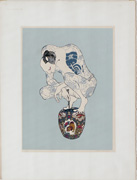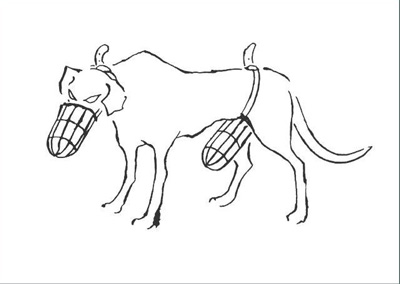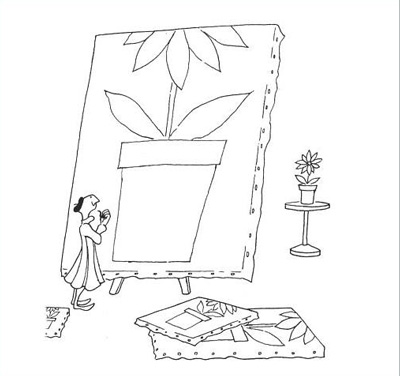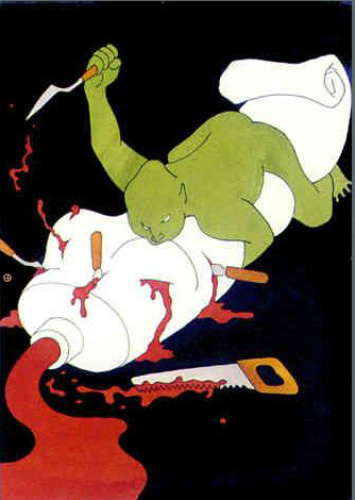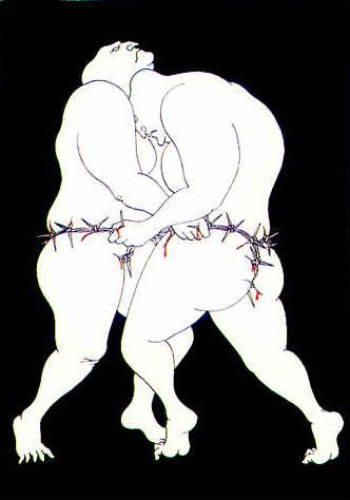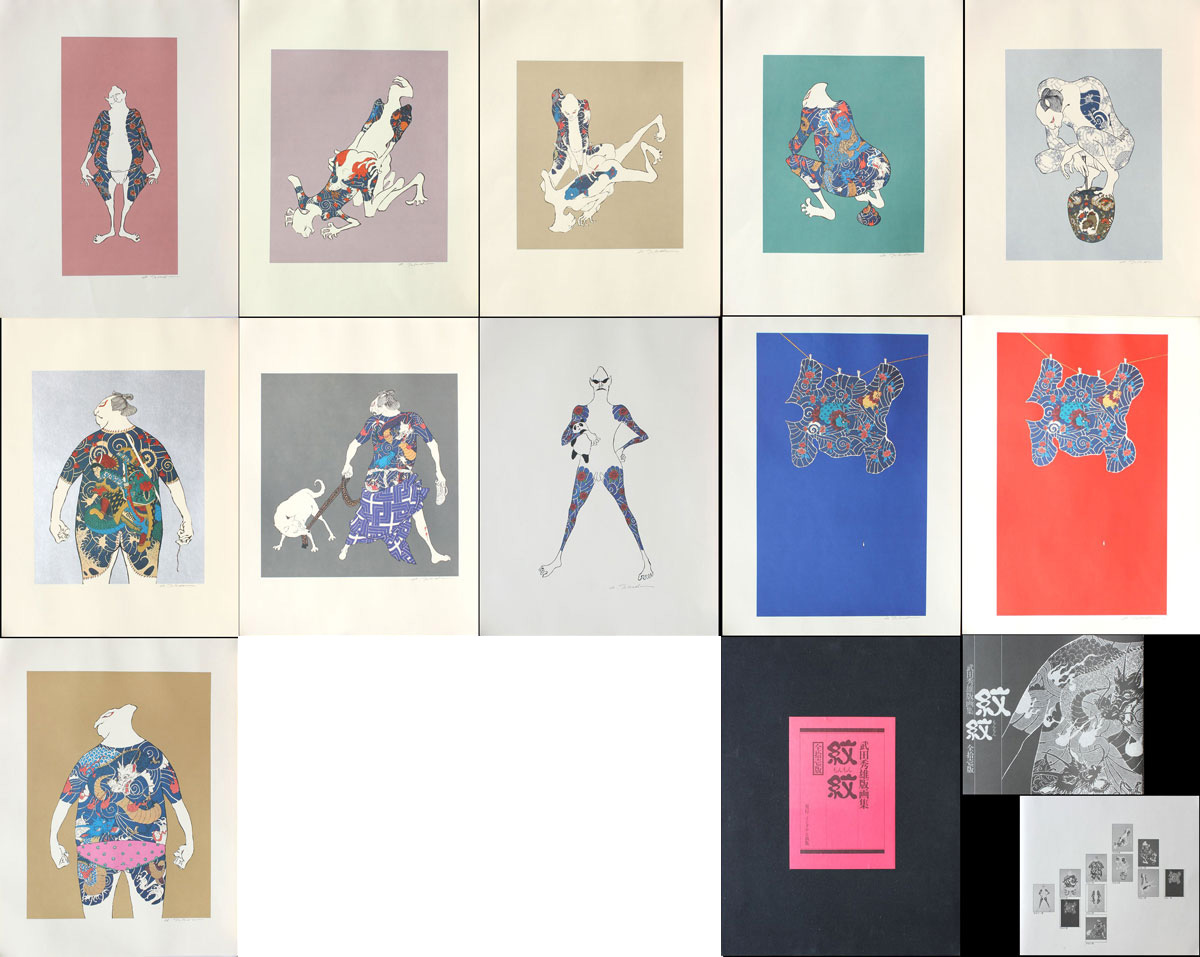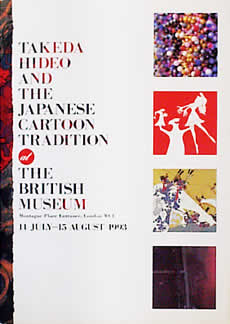Biographical Data
Biography
Takeda Hideo 武田秀雄 (b. 1948) 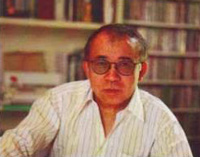 photo of artist taken in 2011 photo of artist taken in 2011 | Hideo Takeda always claims he is a cartoonist, not anartist; but as a cartoonist, he must necessarily be a master of line. ---therefore, [he] ranks as a Japanese artist by definition. – from the artist’s website http://takeda.cooh3.com/index.html It is my belief that having so specific style is my ownstyle. – the artist, 2011.1 |
Takeda is best known as the creator of "bizarre images," often depicting explicit sex acts. Born in Osaka in 1948, Hideo Takeda always enjoyed drawing but was unsure about what direction to take with it. Attending Tokyo’s Tama Fine Arts University2, he received an M. A. in Sculpture in 1973, but decided before he graduated that he wanted to become a cartoonist. In a 2001 interview, the artist said that “American cartoons attracted and inspired me” and that he was captivated by illustrations in Playboy magazine.3 His graduation submission at Tama was a privately published book of one-panel cartoons titled Madam Chen’s Chinese Restaurant and over the years he has published a number of additional one-panel cartoon collections including Yogi (1974), Opera Glass (1976), Altamira (1979), The Sketchbook of 100 Kinds of Professions (1986), and The Poisons (1987).
from Madam Chen’s Chinese Restaurant, 1973 from the artist's website | from Madam Chen’s Chinese Restaurant, 1973 from the artist's website |
| Painter from 100 Kinds of Professions, 1986 from the artist's website | Sumo Wrestler from 100 Kinds of Professions, 1986 from the artist's website |
The year after graduation he began giving one-man shows andat the age of twenty-seven he won the prestigious Bungeishunju Manga-sho4(Bungeishunju cartoon award) for his portfolio of eleven silkscreen prints titled Monmon in which tattoos are the focus of each print.
As in Monmon, Takeda specializes in single-scene (one-panel) cartoons, believing that this format can be “enjoyedby a wide audience” and he chooses to usesilkscreen as a medium to reach his audience, working with the best silkscreen printers he can find.5
In 1980 Takeda published the book Bonsai Your Pet. While its subject matter had nothing to do with its title, it was used as fodder for a brief hoax about, and subsequent outcry against, the raising of sculpted and stunted pets.
In 1985, possibly his best known silkscreen print, Markof the Fan appeared on the cover of Lawrence Smith’s ContemporaryJapanese Prints, Symbols of a Society in Transition. About this print Takeda commented in a 2001 Japan Times article “It is less an historical image of Minamoto no Tametomo, and more a visualization of my image of this ancient warrior”6 and Takeda's visualization has Tametomo's naked body covered with tattoos and his horse swims through waves of women's legs.
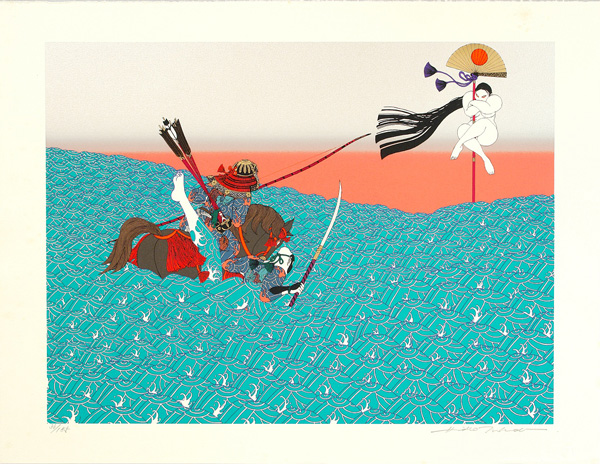
Lawrence Smith, in praising this work, writes:
This is one of the Gempei series designed by Takeda to mark the 800th anniversary of the Battle of Dan-no-Ura, the climax of the great civil wars between the Minamoto and Taira families. These wars have been celebrated in literature and art ever since. Takeda has chosen a style which is close enough to the heroic woodblock prints of Utagawa Kuniyoshi (1797-1861) to satirize them, yet laced with a fantastic eroticism which is mainly absent from those prints but which Takeda implies is present in the way contemporary Japanese look at them. The story so irreverently treated is that of Munataka [sic: should read Tametomo]. He shot from his horse a fan placed on the mast of a Taira ship by a Taira noblewoman, risking disgrace if he missed. Takeda has placed a naked woman on the mast as well, and filled the sea with shapes suggesting female bodies.7
| In 1993 he had the first one-man show at the British Museum dedicated to manga, titled Takeda Hideo and The Japanese Cartoon Tradition. The British Museum acclaimed the elements of eroticism and satire in Takeda's works and the show’s curator called him “a contemporary ukiyo-e artist.” Interestingly, and probably intentionally, it ran concurrently with the exhibition Nineteenth century Japanese Figure Prints of the Ukiyo-e School. In 2002, the Itami City Museum of Art held another Takeda-only show titled Hideo Takeda's World [武田秀雄の世界]. His work has been shown by numerous galleries and he has frequently contributed to the annual CWAJ (College Women's Association of Japan) print show. |
More recently Takeda has explored photography and his website shows images from his photographic portfolio Factory Art, in which the artist has taken his inspiration from Japan's factories. Takeda's most recent works are a series of books and drawingstitled World Night Tours 武田秀雄漫画展. Additional information on the artist and his latest work can be found on his somewhat confusing website at http://takeda.cooh3.com/forsale/indexsale.htm.
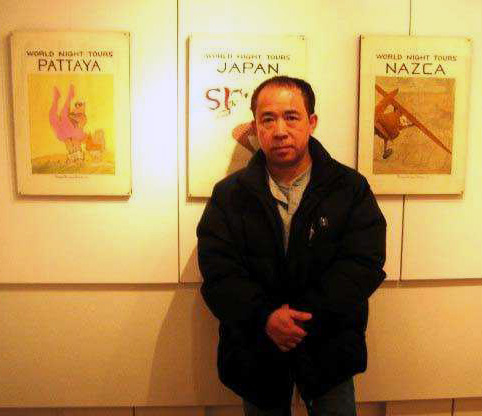 2012 photo of the artist 2012 photo of the artist | 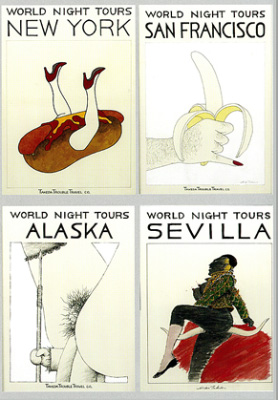 |
4 The Bungeishunjū Manga Award (文藝春秋漫画賞 Bungeishunjū Manga Shō) was an annual award established in 1955 and given out by Bungeishunjū in Japan for gag, yonkoma, one-panel, and satirical manga. The award was also given out for works considered the magnum opus of manga creators.
7 Contemporary Japanese Prints: Symbols of a Society in Transition, Lawrence Smith, Harper & Row Publishers, 1985, p. 41.
